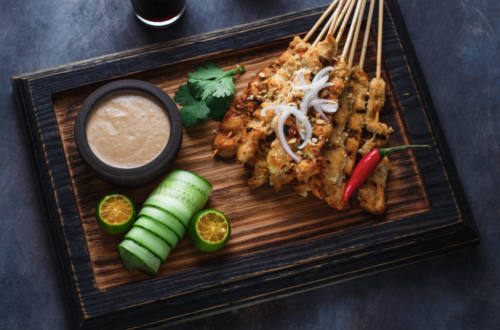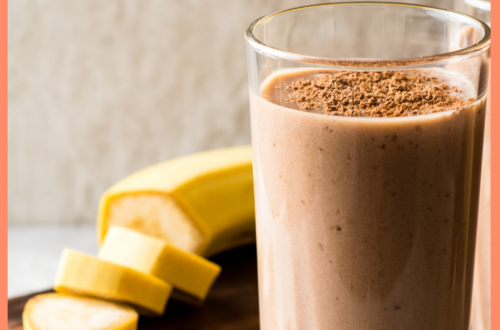
Is Shopping At Whole Foods Worth It?
Answer: It Depends …
Part of me has always wanted to be a Whole Foods shopper – someone who “cared enough” for my family to shop at a grocery store that adhered to the highest environmental and quality standards.
When money was tight, and I could not justify the higher price tag of Whole Foods (vs large supermarket next door). Fast forward to now: we can afford – and are willing – to pay more for responsibly and locally produced food. Another game-changer: Amazon purchased Whole Foods in 2017 and promptly started price promotions aimed at its own Amazon Prime members – like me.
I asked myself: Is this the opportunity I have been waiting for – to buy fresh and organic produce, the most cared-for animal products, and a dizzying array of bulk items and specialty condiments – all at a reasonable cost??
Most of us are familiar with the stereotypes and jokes around shopping at WF, and some of them are justified in my opinion. (Not familiar? Read Thrillist’s “The 26 People You’ll See at Every Whole Foods”– it’s hilarious. Or “Why Everyone Hates Shopping at Whole Foods” – it’s less hilarious but perhaps more informative.)
Still, after a few months of seeing the almost-too-good-to-be-true advertised deals show up in my inbox from Amazon, I decided to try doing our weekly grocery shopping at our (one and only) local Whole Foods.
A few general observations:
- Some prices are lower overall. There is no disputing that the Amazon acquisition has resulted in better deals for WF (and especially Amazon Prime) customers:
- Conventional and organic produce is competitively-priced, compared to big supermarkets.
- Amazon Prime members save an additional 10% on sale prices storewide, eg, I scored 16-oz bottles of GT’s kombucha for $2.25 each.
- The store feels slightly less elitist.
- Maybe it’s the lower prices
- It could be the smiley-faced Amazon logo plastered all over the place.
- Perhaps there are more regular people-shoppers. (
- Emphasis on prepared and convenience foods.
- If you need a grab-and-go lunch or want to create-your-own-meal from the salad and hot food bar, WF is the place. Even our small store has a smorgasbord of food bar items and ready-to-eat meals.
- For an environmentally-conscious grocer, it feels like a high proportion of WF products – from fresh produce to prepared dishes to supplements – are offered in single-serving packages. I saw lots of small plastic tubs containing a few pieces of fruit or a small salad. What I’m saying is that there is an ironically high packaging(ie, trash)-to-food ratio.
- Great for one and two-person households, but not ideal for families.
- The carts are straight up child-sized and cannot hold more than a couple of days’ worth of groceries for a family. My guess is that the cart size is meant to be proportional to the uber-narrow aisles also found in every Whole Foods.
- There’s a lovely packaged meat and frozen foods selection, but I would have to buy 3 – 5 plastic-in-cardboard packages of, for example, dumplings to make a meal for our family of four. No, thank you.
- Quality standards
- I bought a bag of navel oranges, and the first one my husband pulled out had mold covering one side. I cut off the moldy part and found a seed in it (navel oranges are not supposed to not have seeds).
- Is this an exception, or has quality slipped? Not sure, but I was disappointed.

Whole Foods may work great for the following situations:
- You live or work right by one. WF is great for grabbing a quick meal or picking up a fancy cheese or beverage to go with dinner. Plus, if you’re in walking distance you don’t have to deal with the nearly always insufferable parking lot, or try to fit a week’s worth of groceries into a miniature shopping cart.
- You need a healthy or food-allergen specific meal. I just adore how even the hot bar items at WF have all the ingredients and even calorie count posted. Yes, I’m a total nerd like that. If you’re allergic to anything or just want to avoid canola oil, you can confidently fill up a to-go box of delicious items that meet your criteria.
- You’re hosting an event and want to impress somebody with food. If you have the time, hand-selecting everything from cheese and crackers to wine to fresh fish can be pretty darn fun and interesting at WF. The staff is super knowledgeable and only too happy to advise you on pairings, cuts of meat, etc. Even if you want them to cater your brunch or dinner party, the options are wonderfully unique (without being weird) and delicious.
- You buy groceries for just yourself … or yourself + one adult, or yourself + one adult + one small child. Foodies who live alone or nearly so can just go nuts in WF, trying all the new, local, and unique foods. From the bulk bins to the condiment aisle to the bakery, there are limitless options for culinary exploration and creativity. I digress – the point is, if you don’t have to buy a lot of groceries, you can fit them all in a tiny WF cart.
The regular supermarket may be a better choice if:
- You have a family and/or buy for three or more people. Any more than 2 adults and 1 small child, and the WF carts and quantities are frustratingly small. Also implied is that if you have more than one child, you don’t have the time and patience to go to the grocery store every other day.
- You are short on time. WF lives up to its reputation of being difficult to navigate (narrow aisles, sometimes choppy store layout), having lines at every stop (butcher to deli to checkout), and customers and staff clogging up the place as they debate things like gluten free dessert brands or animal welfare.
- You need to stock up. Woe is the person who walks into WF thinking they will buy a month’s worth of anything (except maybe spices). I reiterate: puny carts and small quantities of everything.
- You are shopping for food staples. Just want a “normal” loaf of bread? Good luck! You will have a dry, smallish, whole-grain and very expensive loaf that your kids will say tastes like cardboard (and it does). A pound of bacon? Off to stand in the butcher counter line for 20 minutes, because the only packaged bacon is in 6 – 12 ounce sizes. Repeat this for everything on your list. Did I mention the itty-bitty carts and narrow aisles?
Whole Foods now has lower prices, broader appeal, but …
In summary, the new, Amazon-owned Whole Foods has definitely made efforts to appeal to a wider market base by lowering prices and adding recognizably Amazon-ian characteristics.
Is Whole Foods for you? In my assessment, WF is worth a try if you want to buy more responsibly-produced food and you live by yourself (or with just one or two other people) or you live right by the store. In my opinion, a disciplined single person with a very limited budget (eg, a college student) could successfully shop at WF. In fact, the store seems to cater to small households that value quality, healthfulness, and convenience.
On the other hand, if you’re shopping for a family of four or more, Whole Foods could be inconvenient at best and a waste at worst. WF shopping carts are tiny compared to those at major supermarkets. Fresh meats, frozen foods, and grocery items (eg, cereal) come in relatively small packages, and there is a limited selection of staple items such as bread. In short, I found myself with a small cart full of lots of small packages of food.
Are you a WF shopper? If you’ve recently converted to WF as a result of the Amazon acquisition, what has been your experience? I’d love to hear your thoughts on this topic!
Works Cited
Bolluyt, Jess. “The Scathing Reasons Why Everyone Hates Shopping at Whole Foods.” Showbiz Cheat Sheet, 7 Aug. 2017, www.cheatsheet.com/culture/why-everyone-hates-shopping-at-whole-foods.html/.
Button, Kimberly, et al. “7 Reasons Why I Hate Whole Foods.” Get Green Be Well, 25 Aug. 2019, www.getgreenbewell.com/7-reasons-why-i-hate-whole-foods/.
Infante, Dave. “The 26 People You’ll See at Every Whole Foods.” Thrillist, Thrillist, 24 Feb. 2015, www.thrillist.com/eat/nation/whole-foods-stereotypical-shoppers-the-26-people-you-see-at-whole-foods.





